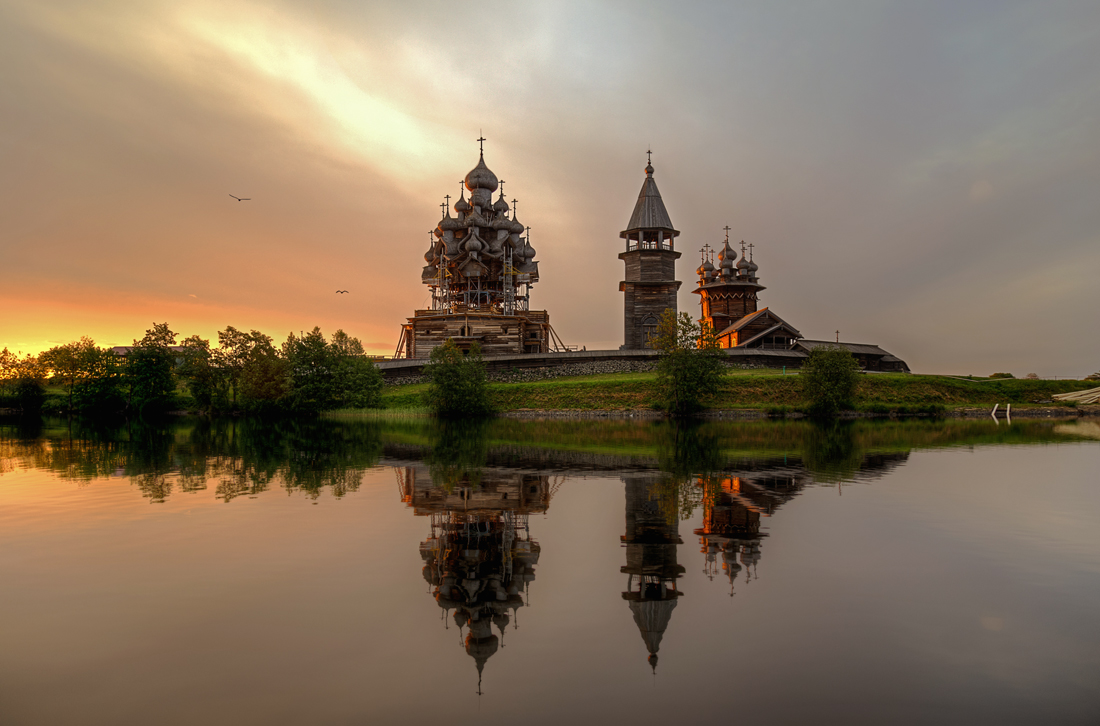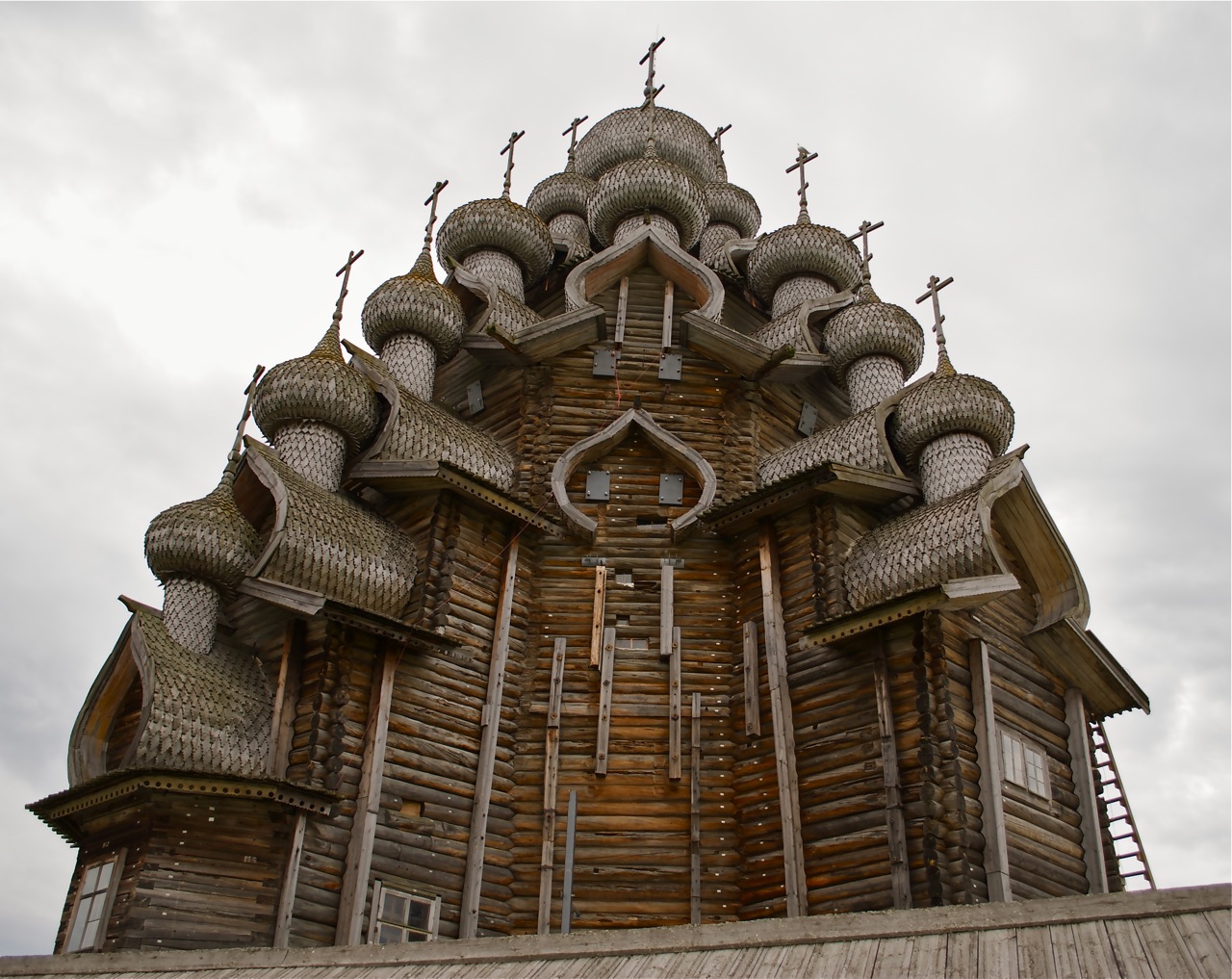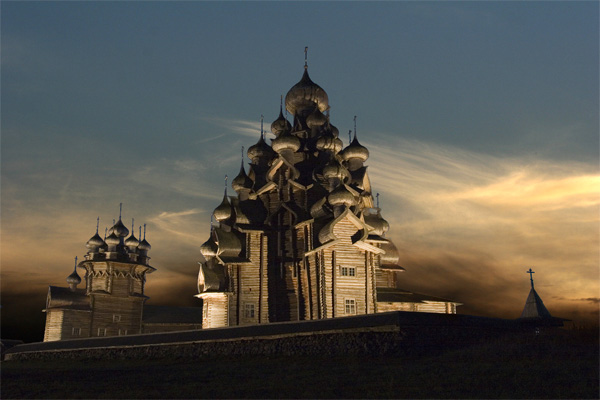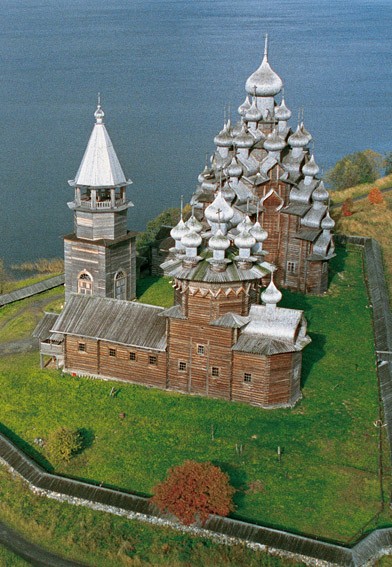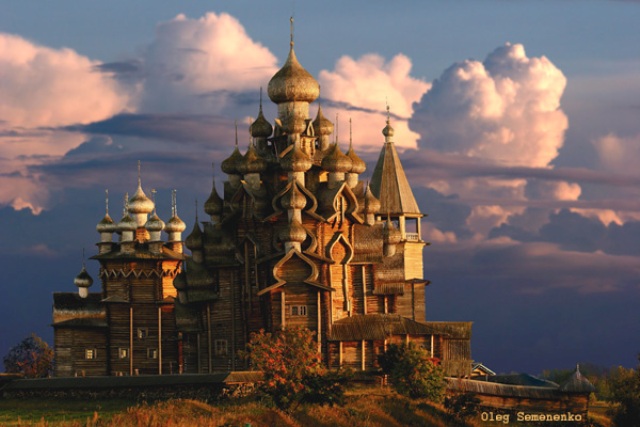Kizhi Pogost is a historical site dating from the 17th century on Kizhi island. The island is located on Lake Onega in the Republic of Karelia (Medvezhyegorsky District), Russia. The pogost is the area inside a fence which includes two large wooden churches (the 22-dome Transfiguration Church and the 9-dome Intercession Church) and a bell-tower. The pogost is famous for its beauty and longevity, despite that it is built exclusively of wood. In 1990, it was included in the UNESCO list of World Heritage sites and in 1993 listed as a Russian Cultural Heritage site.
The pogost was built on the southern part of Kizhi island, on a hill 4 meters above the Lake Onega level. Its major basic structural unit is a round log of Scots Pine (Pinus sylvestris) about 30 cm in diameter and 3 to 5 meters long. The Kizhi Pogost was built without using a single nail. Many thousands of logs were brought for construction from the mainland, a complex logistical task in that time.
The Church of the Transfiguration (Russian: Церковь Преображения Господня) is the most remarkable part of the pogost. It is not heated and is therefore called a summer church and does not hold winter services. Its altar was laid June 6, 1714, as inscribed on the cross located inside the church. This church was built on the site of the old one which was burnt by lightning. The builders names are unknown. A legend tells that the main builder used one axe for the whole construction, which he threw into the lake upon completion with the words "there was not and will be not another one to match it".
The church has 22 domes and with a height of 37 meters is one of the tallest wooden buildings of the Russian North. Its perimeter is 20×29 meters. It is considered that the 18-dome church on the southern shore of Lake Onega - built in 1708 and destroyed by fire in 1963 - was its forerunner. According to the Russian carpentry traditions of that time, the Transfiguration Church was built of wood only with no nails. All structures were made of scribe-fitted horizontal logs, with interlocking corner joinery — either round notch or dovetail — cut by axes. The basis of the structure is the octahedral frame with four two-stage side attachments (Russian: прируб, "prirub" from "rubit" meaning "to cut wood"). The eastern prirub has a pentagonal shape and contains the altar. Two smaller octagons of similar shape are mounted on top of the main octagon. The structure is covered in 22 domes of different size and shape, which run from the top to the sides. The refectory is covered with a three-slope roof. In the 19th century, the church was decorated with batten and some parts were covered with steel. It was restored to its original design in the 1950s.
The church framework rests on a stone base without a deep foundation, except for the western aisle for which a foundation was built in 1870. Most wood is pine with spruce planks on the flat roofs. The domes are covered in aspen.
The iconostasis has four levels (Russian: четырёхъярусный) and contains 102 icons.[6] It is dated to the second half of the 18th – early 19th century. The icons are from three periods: the two oldest icons, "The Transfiguration" (Russian: Преображение) and "Pokrov" (Russian: Покров) are from the late 17th century and are typical of the northern style. The central icons are from the second half of the 18th century and are also of the local style. Most icons of the three upper tiers are of the late 18th century, brought from various parts of Russia.




